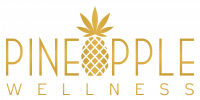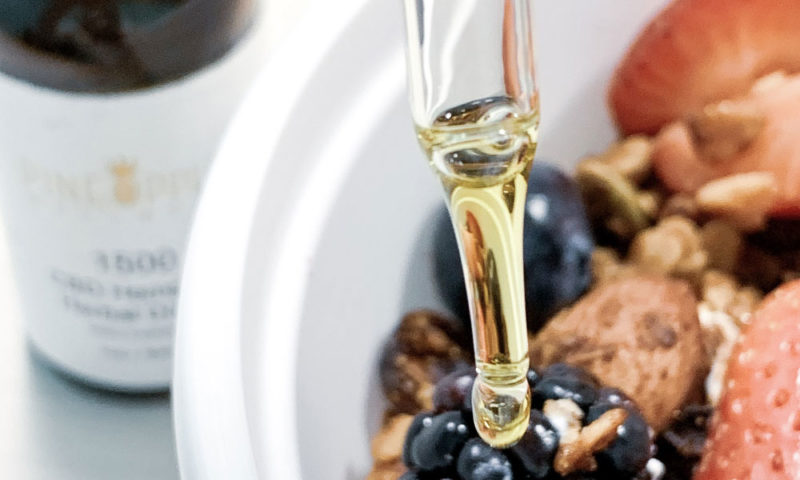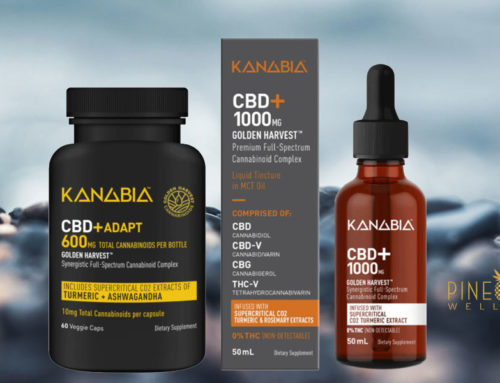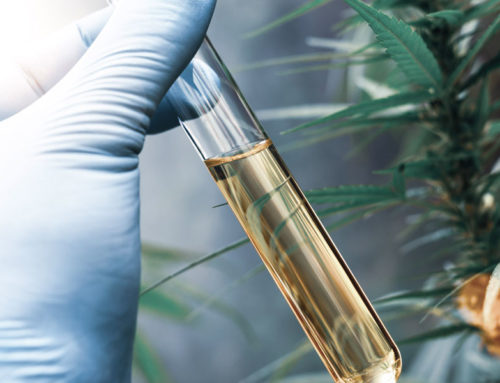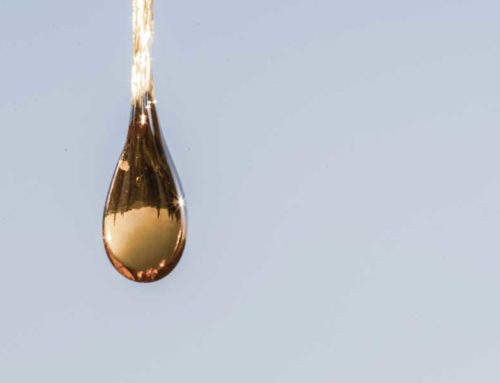The good things in life take time. CBD is one of those good things. It takes a bit of time and care to find your optional dose and the delivery system that works for you.
What your friend says works for them, may not be the right dose or delivery system that works for you.
That’s why we’ve researched the most recent science and top doctor recommendations to put together a simple CBD guide to help you find your optimal CBD dosage and CBD delivery system that fits your lifestyle and your body’s needs.
OK, here we go.
Step #1: Get specific on why you are using CBD
How does CBD work?
The cannabinoid CBD (cannabidiol) and other cannabinoids found in cannabis and hemp (CBDa, THC, ThCa and over 100 more!) interact with our body’s endocannabinoid system (ECS), basically exerting their effects on us by mimicking our own endocannabinoids through an internal neurotransmitter network called the endocannabinoid system.
The primary function of the endocannabinoid system is to maintain homeostasis—harmony within our body in response to changes in the environment.
Scientists have discovered that when our endocannabinoid system isn’t functioning correctly, our health suffers.
The good news is that when we can support our endocannabinoid system by adding exogenous (eternal) cannabinoids, like CBD, we can improve our overall well-being and health. We could potentially slow or even stop many diseases that have previously been untreatable, like Fibromyalgia, Irritable Bowel Syndrome (IBS), and other treatment-resistant syndromes.
Science also suggests that modulating the ECS activity holds therapeutic promise for a broad range of other diseases, including neurodegenerative, cardiovascular, and inflammatory disorders, obesity/metabolic syndrome, cachexia, nausea and vomiting, tissue injury, and discomfort, among others.
Although CBD is a non-intoxicating cannabinoid, you don’t want to waste your precious CBD if your body is not absorbing it. As it turns out, taking too little or much CBD can hinder its ability to support homeostasis.
For example, a recent study with mice showed that the activity of the ECS declines during aging, which would make you think that adding in MORE cannabinoids would help. But in actuality, a low dose of the CBD’s sister cannabinoid THC, “reversed the age-related decline in cognitive performance of mice’.
Right now, what we do know is that there is no ‘one size fits all’ specific dose for everyone, as many factors like age, overall health, genetics, and specific health conditions come into play.
Recent studies are also showing that clarifying WHY you’re using CBD is an influential determining factor for patients using CBD to support their body and health and seeing positively high results.
The first question you want to clarify within yourself is, why are you taking CBD?
Are you curious to see if your overall body and health might need a bit of support so that you feel like your best self? Are you dealing with a specific issue like sleeplessness or anxiety? Or maybe you’re looking for a healthier alternative to over-the-counter (OTC) and prescription anti-inflammatory medications?
Having clarity on what has specifically inspired you to search CBD dosing and products, will help you to determine how your dose and delivery system is working for you once you start using a CBD product, and receiving the benefits of CBD.
Step #2: Choose a CBD delivery system
When using CBD, only a small percentage will enter your bloodstream. This is due to something called “bioavailability.” Bioavailability is the degree to which a drug or other substance becomes available after administration. Each delivery system has its own bioavailability.
Here’s a quick CBD bioavailability breakdown per delivery system:
CBD Edibles and capsules
The bioavailability of CBD is about 15 percent, which means that if you eat 1000 milligrams of CBD, only 150 milligrams will reach your bloodstream. Edibles have a lower bioavailability because they are processed through the stomach and liver first before entering the bloodstream.
CBD vaporizers, drops or tinctures, and transdermal patches
The bioavailability of CBD is about 50 percent which is triple the amount of bioavailability in comparison to orally ingesting CBD. Administering CBD this way, you your body the ability to move CBD directly into your bloodstream, instead of it being processed through your stomach and liver first. If you ingest the same 1000 milligrams of CBD, you are receiving over 500 milligrams of CBD instead of the 150 milligrams with an edible.
Topical CBD rubs, balms, and bath balms and soaks
If you want to use CBD because of arthritic pain or muscle soreness, a topical CBD product may be more helpful for you to target the specific area on your body. This method can deliver a high concentration of CBD to the particular area, and very little, if any, enters your bloodstream.
Step #3: Choose your type of CBD product
You’ve probably come across products labeled as full-spectrum CBD, broad-spectrum CBD, and CBD isolate. These terms define which kind of CBD can found in a product: Either products that contain only very specific cannabinoids and compounds while excluding others or products that contain all the essential compounds.
Here’s a quick breakdown of what each product contains:
Full Spectrum CBD is an extract that contains all the compounds found naturally occurring in the cannabis plant, including terpenes, essential oils, and other cannabinoids. This means that full-spectrum CBD contains .3 percent THC, which is the legal limit of THC allowable by Federal Law.
Broad Spectrum CBD is a bit of a mix between full-spectrum CBD and CBD isolate. This means that like full-spectrum CBD, the other compounds found within the cannabis plant stay preserved in the extract; however, THC is completely removed.
CBD Isolate is the purest form of CBD, which means all the other plant compounds and cannabinoids, except for CBD, have been completely removed, leaving a CBD isolate.
Studies show that synthetic, single-molecule CBD has a very narrow therapeutic window and requires precise, high doses for efficacy, whereas lower dose, whole-plant, CBD-rich treatment regimens are showing effectiveness for many conditions.
Step #4: Get a journal to track your progress
Even though the idea sounds daunting, you’ll thank us later!
Simply tracking your body and how you feel each day as you start using CBD is the most insightful and best tool you’ve got. Use it!
Your notes can be as simple as adding a few highlights and notes on these key areas:
- You’ll want to create a baseline for how you feel before starting to use CBD, which will help you determine how CBD is affecting you.
- Jot down what delivery method you used and how it worked for you.
- Be clear on what your dosage was for the day.
- Note how you felt and what were the physical effects. You can even use a score to rate your symptoms before and after using CBD.
Step #5 Finding your optimal dosage
An effective dosage can range from as little as a few milligrams of CBD-enriched cannabis to a gram or more. Generally speaking, studies have used as much as 300 mg of CBD in a single dose, but a recent study showed that using as little as 25-175 mg is elicit adequate clinical responses in patients.
We recommend starting with a very low dose of around 1-6 mg per 10lbs of body weight. This way, you can track how the CBD dose affects you, and slowly titrate up (use more) until you feel the results.
Here’s an example of how this breaks down:
Weight Low Dosage Per Day High Dosage Per Day
100lbs 10mg 60mg
150lbs 15mg 90mg
200lbs 20mg 120mg
If you’re using an oral formulation, try one or two drops to start.
If you’re using a vaporizer, take a tiny puff to start.
If you’re using an edible, take one small dose to start – and wait at least 6 hours before taking another dose.
Use this same dose over a few days. If you don’t feel or see any results, you’re ready to use a bit larger dose for a few more days until you see results. When you see and feel the results, this will be your optimal dose for your body.
You will also want to remember to take into consideration each delivery system’s bioavailability, as each delivery system will affect how much CBD absorbs into your bloodstream.
Start low, go slow, and you’ll find your optimal dose in no time!
